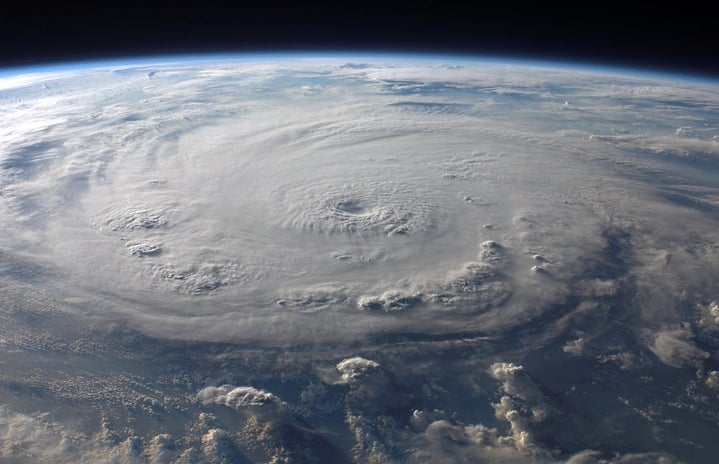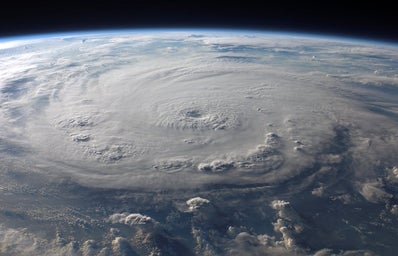Living in Florida, hurricanes are a common occurrence. Us Floridians are used to hurricanes since we see them every year, beginning in June and ending in December. However, thousands of students move to Florida to attend one of the many colleges we have to offer. They come from different places around the world and might not know what a hurricane is, let alone how to prepare for one.
This article is a guide that shows you how to prepare for a hurricane as a college student!
- educate yourself
-
First, you need to know what a hurricane is. A hurricane is a cyclone of wind and rain that violently rotates in a counterclockwise motion. Hurricanes are violent storms that bring masses of rain and wind to the affected area, which stretches miles. Flooding, tornadoes, building damage, etc. are all possibilities under a hurricane. These systems are formed by low-pressure areas in the Atlantic and can increase in intensity. This intensity is recorded by the Saffir-Simpson Scale:
- Category 1: 74-95 mph
- Category 2: 96-110 mph
- Category 3: 111-130 mph
- Category 4: 130-156 mph
- Category 5: 157 mph or more
The higher the category, the deadlier the storm. Prior to becoming a hurricane, the low-pressure systems become tropical depressions, with low winds and lots of disorganization. Then, when winds pick up to 39 mph, it becomes a tropical storm.
- Learn how to track a hurricane
-
Now I’m not saying you need to track a hurricane the way a meteorologist does by studying pressure and wind patterns. What you should do is familiarize yourself with what the meteorologists show on TV. Not every forecast is accurate, as it’s hard to predict where a hurricane might go and when it’ll make landfall. Spaghetti models are the little squiggly lines that professionals use to show the possible direction of a hurricane. They also show a large cone that’s narrow where the hurricane is and wider the further you move away from it. That’s meant to show all the possible locations the hurricane might go from its current location.
On the bright side, when a hurricane forms there are many days between its formation and the time it makes landfall to plan. Understanding the basics of tracking can help you decide what you need to prepare for.
- Know your evacuation plan
-
First off, you need to know your evacuation zone. It’s a quick search on the Florida Disaster Zone. Familiarize yourself with main roads that lead to areas of evacuation, whether you are headed north, south, east or west. You should also learn some of the backroads you can take. You won’t be the only person evacuating, so the major highways and roads will be packed. It’s good to know where you need to go ahead of time.
It’ll also be beneficial to locate local storm shelters in case of an emergency.
- Stock up your hurricane kit
-
Hurricane kits are a MUST when it comes to hurricane survival. You never know if or when your electricity will go out or if you have to stay indoors for long periods of time until flooding subsides. Here’s a quick list of some things to keep stock of:
- Two week supply of medication (pain killers, cold medicine, prescription meds, etc.) and first aid supplies
- Two week supply of nonperishable food
- Flashlights and lanterns
- Batteries
- A whistle
- Gas. Keep an extra gallon or two
- LOTS of water. Preferably a gallon per person per day
- Important documents and information in a waterproof case
- Battery powered radio
- Emergency contacts
- Extra cash
- STAY IN THE KNOW
-
Make sure you’re paying attention to your local weather channel. Follow state and national advisories. You should also sign up for text/email alerts from your local area. Don’t be afraid to reach out to local resources such as your campus’s emergency management team to find out what plan they have in place.
Don’t be fooled, a hurricane can become deadly in an instant. It’s better to have a plan set out in advance than to be left struggling last minute, leaving you stuck. Hopefully, these tips will help you feel better prepared if a hurricane heads your way.




